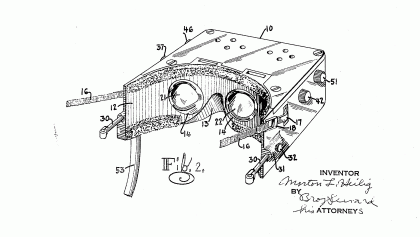Virtual reality has existed for longer than you probably think! Here’s five surprising facts about this ever-evolving technology.
1. The first VR headset was patented in the 1960’s and was named the ‘Telesphere Mask’ by inventor Morton Heilig. Read more about Heilig’s “telescopic television apparatus for individual use” on techradar and see the original patent here.

2. VR isn’t all fun and games – the technology is now being used in healthcare to treat depression, anxiety and PTSD amongst other things. Versatile stuff! Read this article Virtual Reality May Boost Empathy More Than Other Media on Imagination Matters for more interesting applications.
3. The PlayStation VR headset developed by Sony engineers came about from an open-ended tinkering session without any executive direction. That’s something we can get on board with! We believe the best learning and development experiences come when they’re open-ended. Check out this article for a deep-dive read into the R&D process that lead to its creation.
4. Virtual Reality Travel is a thing. In 2015, Marriott boasted about its ability to transport clients from London to Maui in 90 seconds, thanks to Oculus. Beyond marketing, there are really cool experiences to be had with this technology, to see and experience places you might never otherwise be able to.
5. No single person invented virtual reality. Instead, many people have contributed to the technology’s growth. Some of the names include Morton Heilig, Jaron Lanier, Douglas Engelbert, Ivan Sutherland and Myron Kreuger. Collaboration, prototyping and iteration have gone into the development of this versatile technology and those are skills we think it’s fundamental to give people the chance to develop through their lives.
Virtual reality is just one of the technologies that we tinker with in our Imagination Lab programmes. We use CoSpaces, a free tool that you can access online to build virtual worlds that can be viewed on your phone. It’s an introduction to imaginative ways to use the technology for learning experiences and encourages open-ended exploration, just like the process that led VR to where it is today.
